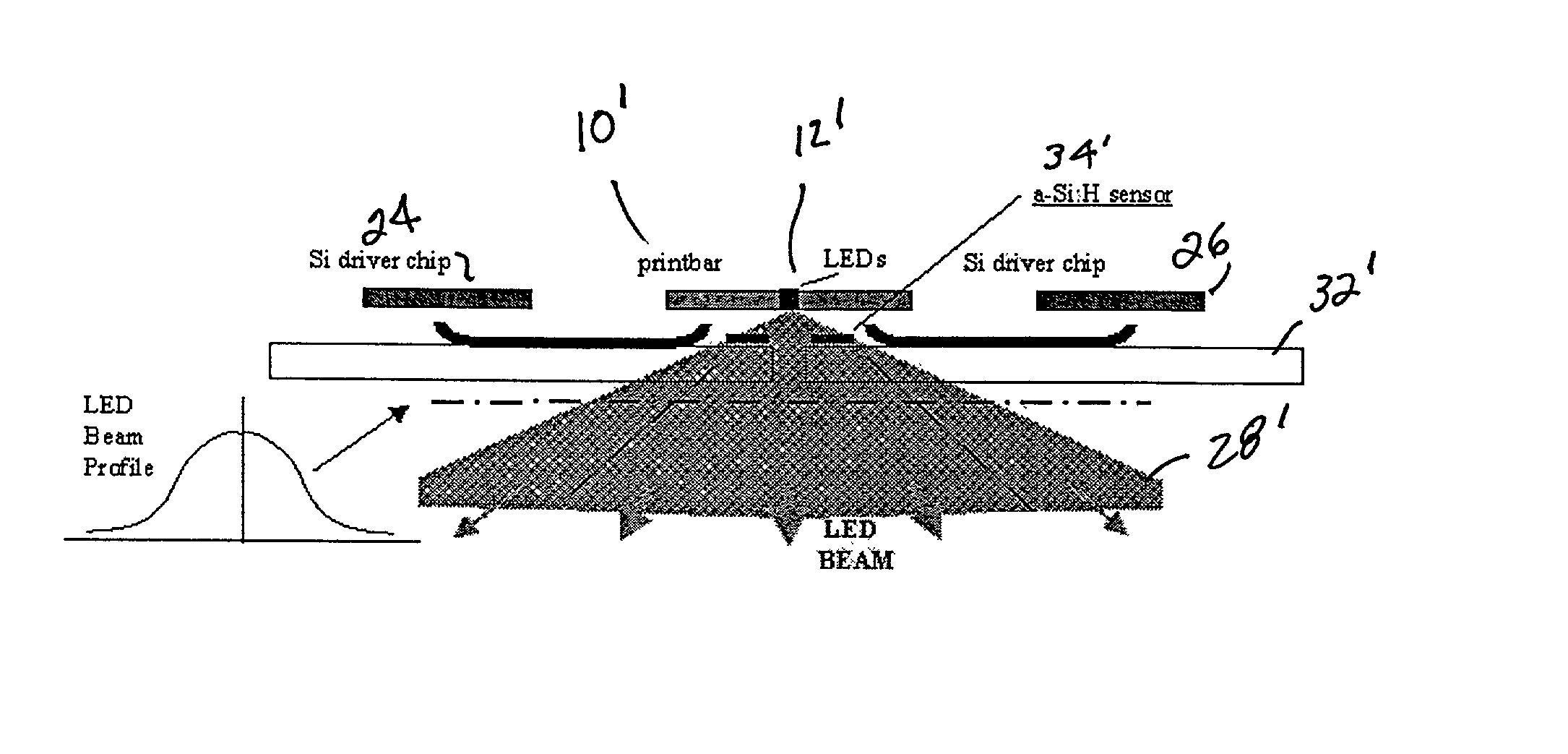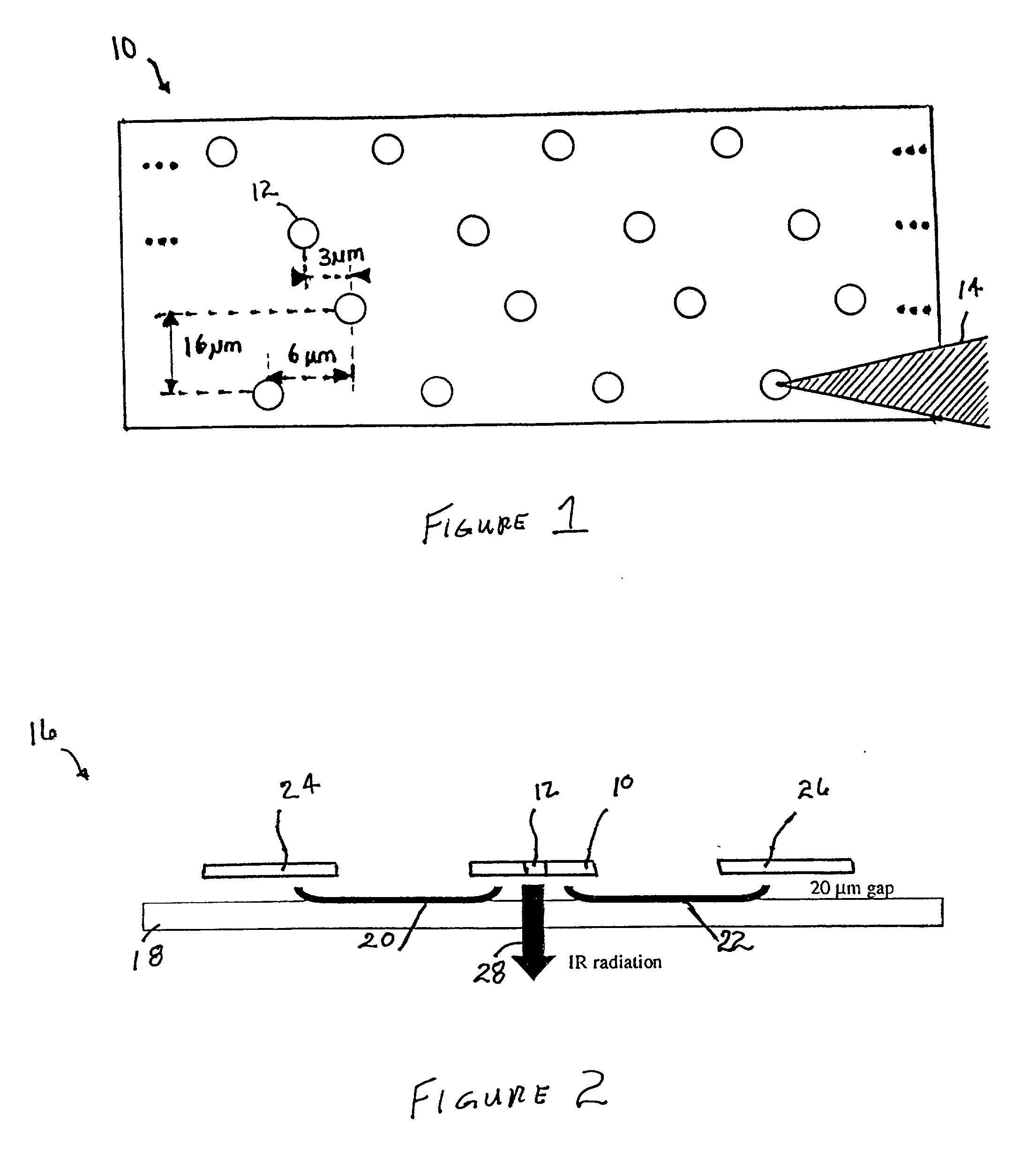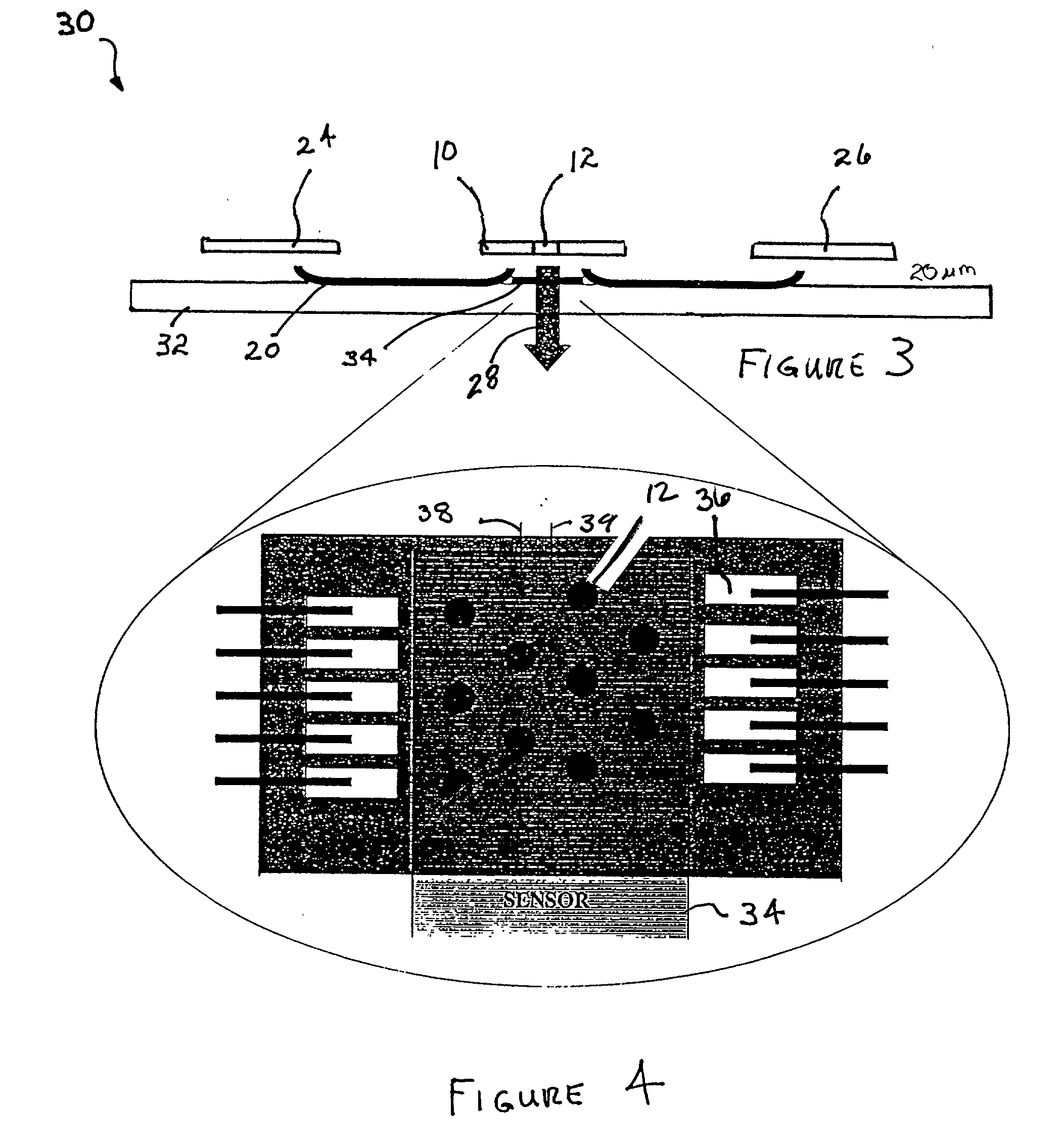Amorphous silicon sensor with micro-spring interconnects for achieving high uniformity in integrated light-emitting sources
a micro-spring interconnect and sensor technology, applied in semiconductor lasers, radiation controlled devices, semiconductor/solid-state device details, etc., can solve the problem of high spatial frequency, non-uniform laser response, and the effect of printed images is noticeable to the human ey
- Summary
- Abstract
- Description
- Claims
- Application Information
AI Technical Summary
Problems solved by technology
Method used
Image
Examples
second embodiment
[0065] Turning to FIGS. 7a-b and 8a-b, the present invention is illustrated. It is known that prior to a laser starting its lasing process a phenomenon takes place known as spontaneous emissions. During the spontaneous emissions, light in the visible range from the laser may be emitted. It is undesirable to have this light, as well as light of any other undesired wavelength, reaching sensor element 44. Therefore, to further improve the reliability of the present invention, when IR lasers are used, an additional processing step may be added. Particularly, after the application of second transparent / conductive layer 46 (as depicted in FIG. 5b), a visible light absorption layer 64, which may be hydrogenated amorphous silicon (a-Si:H), is deposited on top of second transparent / conductive layer 46 prior to sensor element 44 and second transparent / conductive layer 46 being patterned. Visible light absorption layer 64 is opaque to visible light, and transparent to IR light. Once sensor ele...
first embodiment
[0081] Turning to the calibration process, it is noted that in a first embodiment, calibration of lasers 12 of printbar 10 is accomplished by sensing and calibrating a single laser at a time. Particularly, sensors (34, 34', 53, 68, 74) are sufficiently sized to be placed in front of all lasers 12 of printbar 10. In one calibration scheme, the imaging device is not being used to print an image during calibration. Rather, the calibration process takes place during a time when image processing is not occurring.
[0082] In the embodiment describing the laser printbar, it is assumed sensors 53, 68, 70 are rectangular sensors of approximately 4 cm by 200 micrometers, which is large enough to intercept 100% of the laser beams diverging from printbar 10, for a substantially 4 cm-long laser array. The typical divergence of the VCSEL's beam was noted to be smaller than 20.degree..
[0083] The transparency of the amorphous silicon film ensures sufficient laser radiation to exit from the sensor to ...
PUM
 Login to View More
Login to View More Abstract
Description
Claims
Application Information
 Login to View More
Login to View More - R&D
- Intellectual Property
- Life Sciences
- Materials
- Tech Scout
- Unparalleled Data Quality
- Higher Quality Content
- 60% Fewer Hallucinations
Browse by: Latest US Patents, China's latest patents, Technical Efficacy Thesaurus, Application Domain, Technology Topic, Popular Technical Reports.
© 2025 PatSnap. All rights reserved.Legal|Privacy policy|Modern Slavery Act Transparency Statement|Sitemap|About US| Contact US: help@patsnap.com



